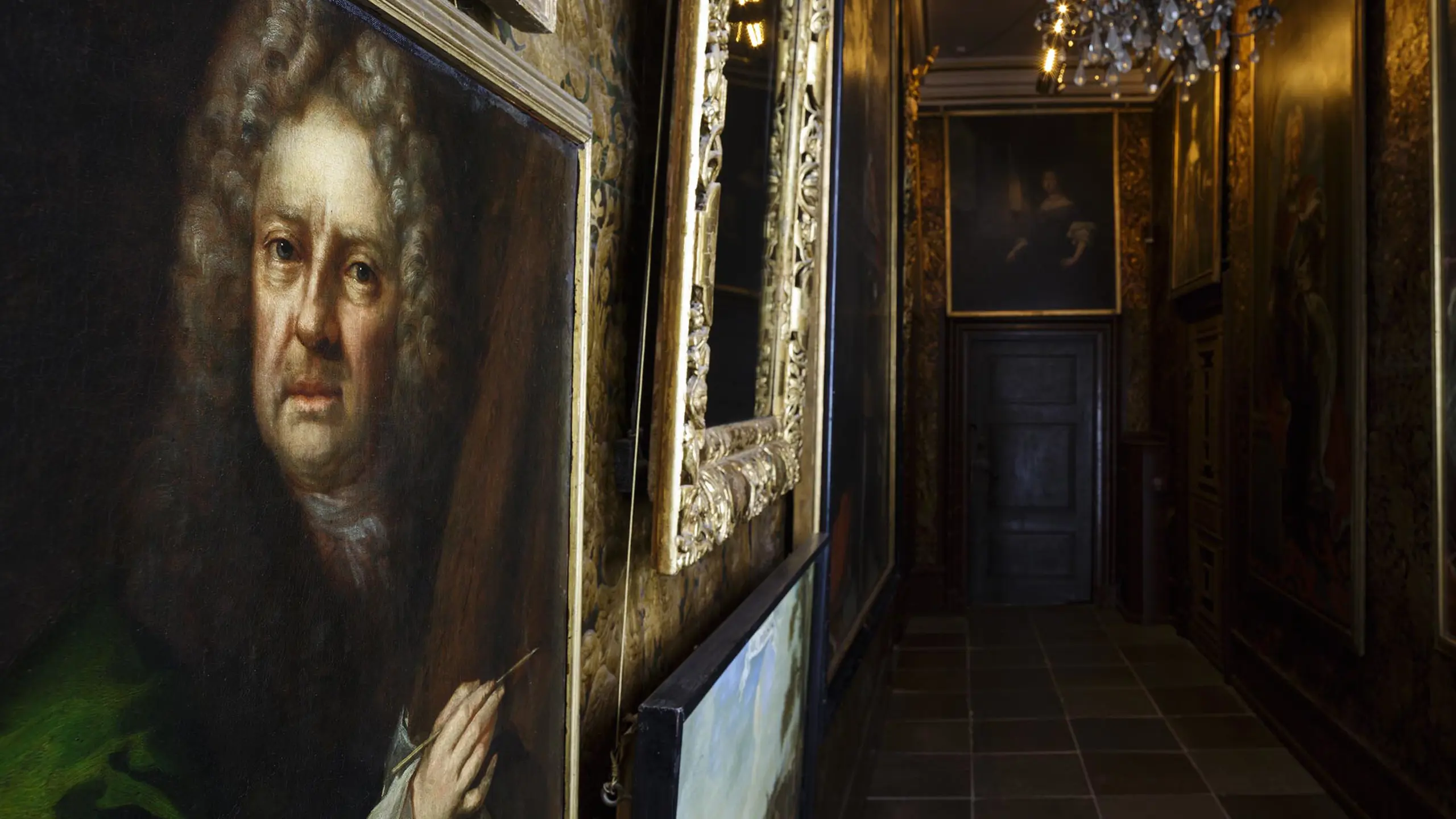Frederik IV’s Corridor (room 8)
Frederik IV’s Corridor is an important part of the history and architecture of Rosenborg Castle. The corridor not only serves to connect the two central parts of the castle but is in itself an impressive gallery, with works of art and historical objects dating from the reign of Frederik IV.

The Great Northern War and gilt-leather panels
Frederik IV’s Corridor connects the central room on the first floor, the Rose, with the hall at the north end of the castle.
The walls of the corridor are crammed full of beautiful paintings and unique historical objects, all dating to the time of Frederik IV (1671–1731).
The Great Northern War, from 1700 to 1721, lasted for more than 20 years of Frederik IV’s reign. Thus, when Rosenborg Castle was converted into a museum in the mid-19th century, items relating to the Great Northern War were assembled and put on display in this corridor. This includes quite a few items relating to the then Swedish King, Charles XII, and his commander Magnus Stenbock, who was captured by the Danes in 1713.
Peter the Great of Russia (1672–1725), another of the main players of the Great Northern War, is also represented by several items, including the magnificent bust, made of gilded lead. In this portrayal, the Tsar wears a Roman costume, with a gorgon’s head in relief on his chest. The bust at Rosenborg is in fact a simplified version of a similar bust at the Winter Palace in St Petersburg.
Today, we know that the bust was included in the Cabinet of Curiosities even before 1737. When the Cabinet of Curiosities was dismantled in 1825, it was transferred to the Royal Art Museum, where it remained until this collection too was dismantled, in 1867. In 1877, the bust was moved to Rosenborg.
Another remarkable item in this corridor is the ivory compass – a personal gift from The Tsar to Frederik IV. In fact, it was lathed by The Tsar himself. This made it the most precious gift imaginable: a piece that the giver had made and thus invested their time in.
However, what makes this corridor so special is not just the many beautiful artefacts and paintings. The walls behind the paintings are also worthy of special attention. They are clad with gilt leather: a kind of wallpaper or panel made of animal skin with beautiful decorations in gold. The gilt leather in this corridor came originally from Frederiksberg Palace. It was installed at Rosenborg during the mid-19th century, when the absolute monarchy was abandoned in Denmark, and several castles and palaces, with their royal interiors, were transferred to the state. During this period, Rosenborg Castle was converted into a museum, which made it convenient to gather many of the artefacts from the decommissioned palaces and castles here.
previous room <- | -> next room
Objects in the room
If you are at the museum, you can admire the fascinating objects in the room and read more about them below.
The descriptions are brief and generally do not include images. They are intended as an added resource if you would like more detailed information about an item, such as who made it, its origin and its meaning.